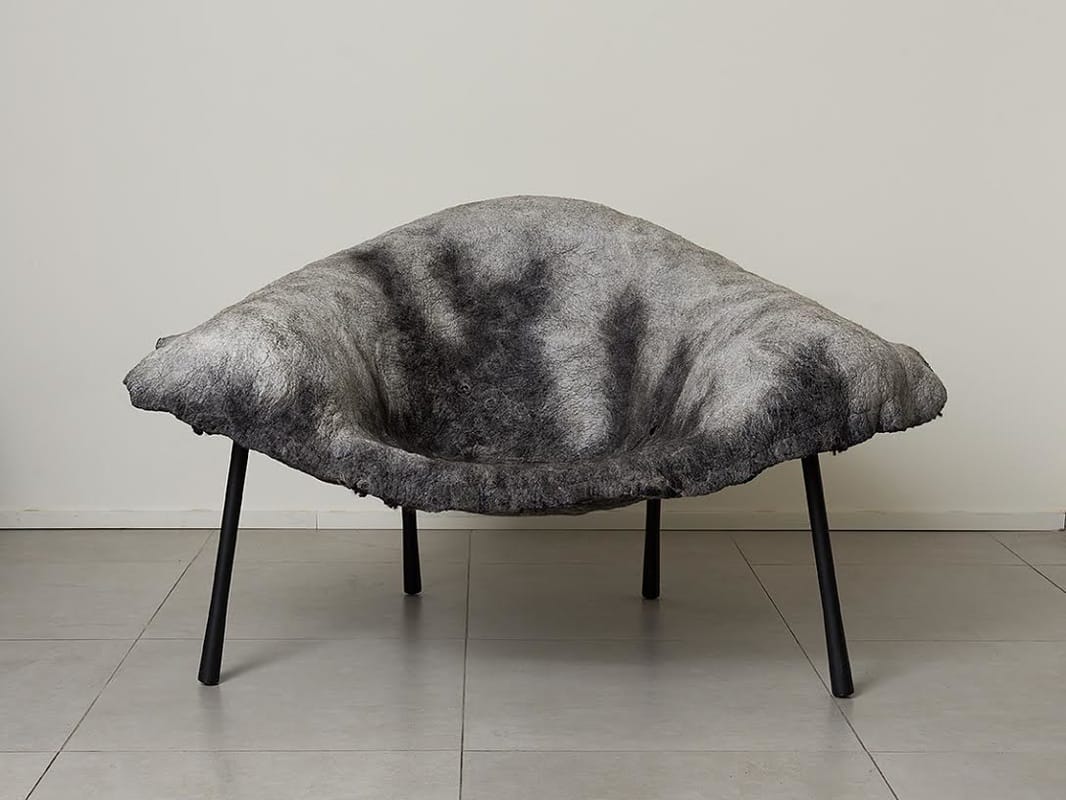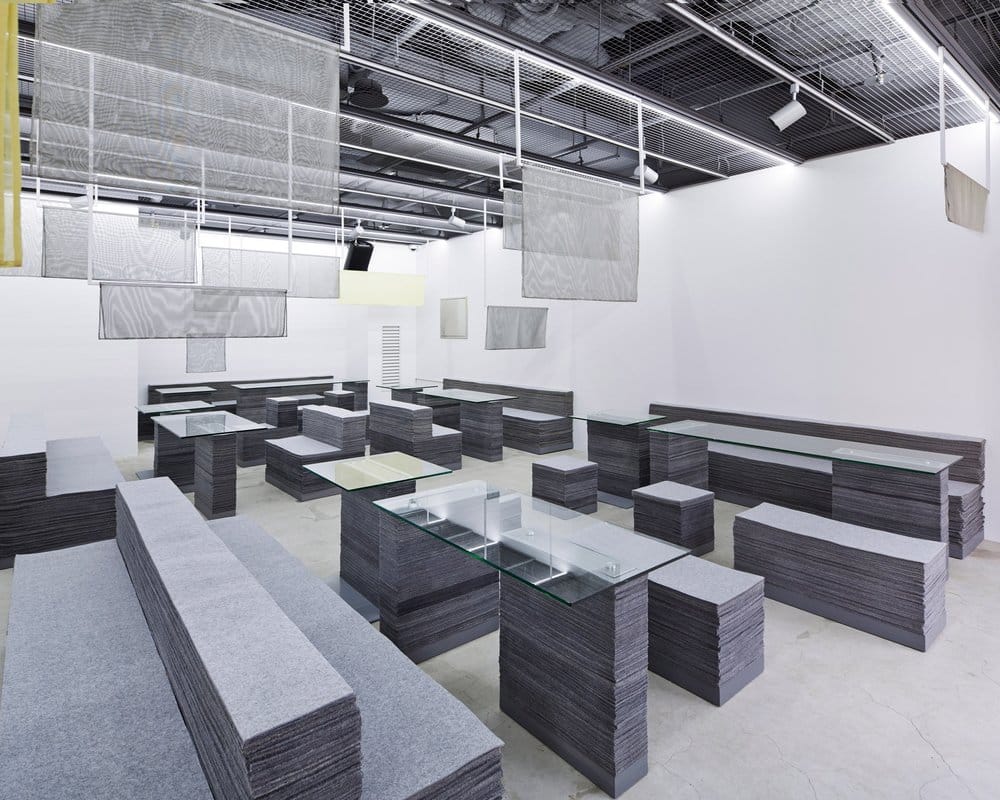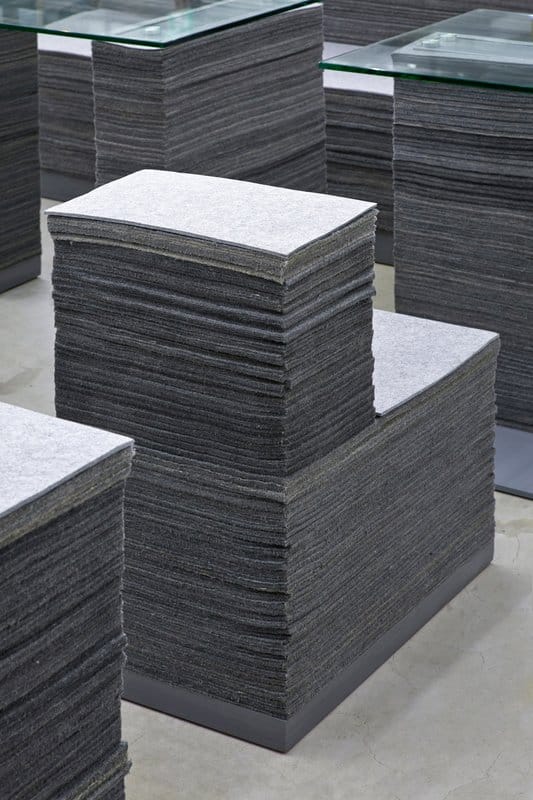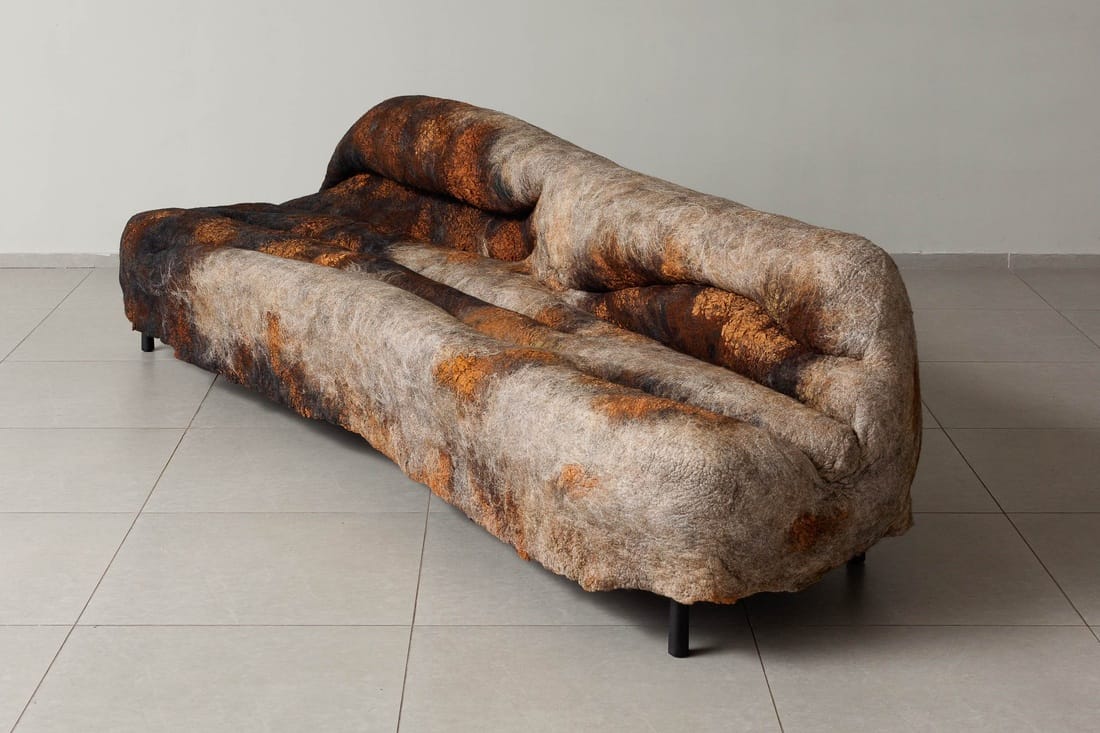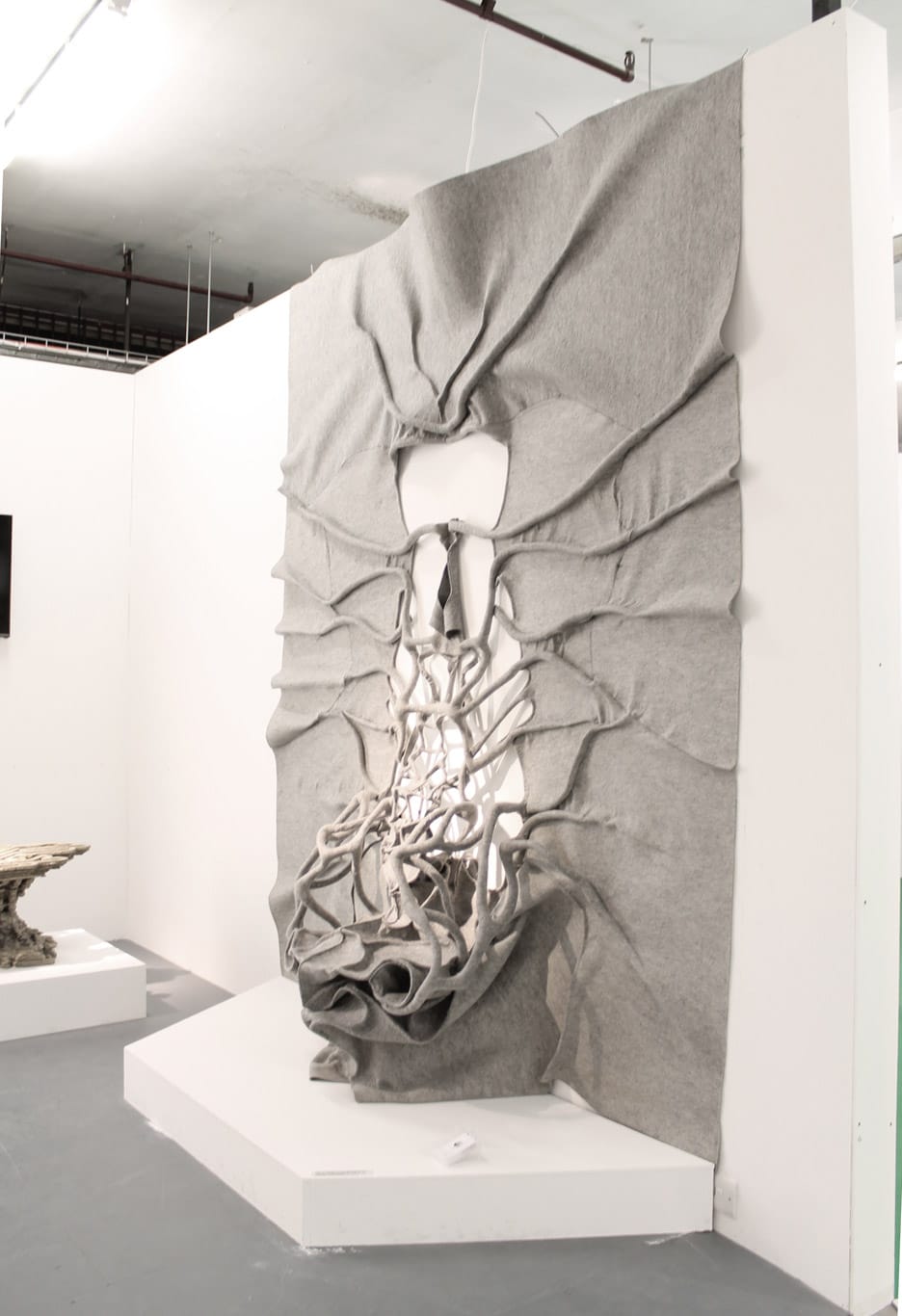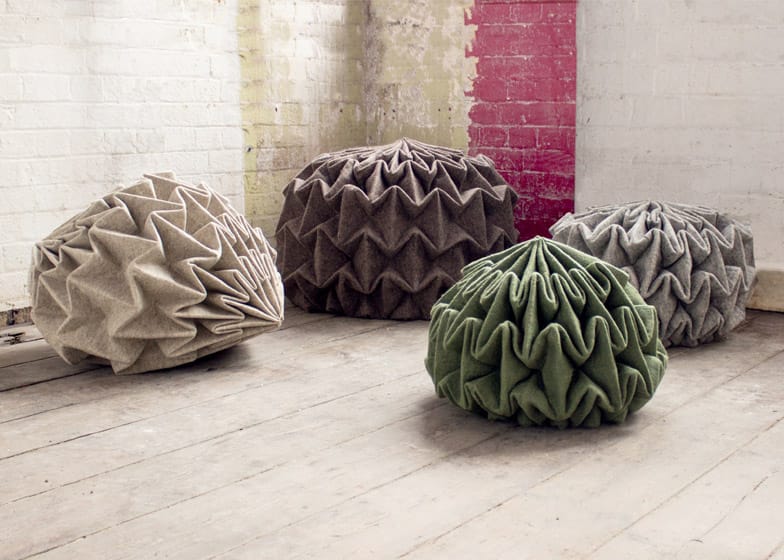Felt, the most ancient of all textiles has enjoyed a remarkable revival. What is felt? It is a textile created by pressing fibers together (rather than knitting or weaving). Felt has become particularly synonymous with the nomadic people in Central Asia, who still create their livign environments, rugs, tents and clothing out of felt, using fibers from local alpaca, goats, and sheep. In the last years of the 20th century, designers have suddenly rediscovered felt, creating contemporary object by reinventing teh use and the crafting of felt. Nameless Architecture used layers of flat to form the stools and benches inside this cafe in South Korea’s Gyeonggi province; Israeli designer Ayala Serfaty crafts seats in molds by felting silk, linen, and wool fibers in rich color and deep textures reminiscent of the moss in the Japanese gardens of Kyoto; Students at the Bartlett School of Architecture have developed a composite material using felt and resin that can be stitched together to create tubular furniture; London-based German designer Jule Waibel created pine cone-shaped seats of steam-folding wool felt; walls, ceilings, furniture and lighting were covered in grey felt at an advertising office in Amsterdam by Dutch Interior Architects; and French designer François Bauchet created sleek pieces of furniture in industrial felt shaped by resin. Here is the most ancient of all textile forms is becoming a progressive material of our age.

